
A strangely “costless” ambiguity: The H and the A are identical, but most people can read this phrase without effort.

A strangely “costless” ambiguity: The H and the A are identical, but most people can read this phrase without effort.
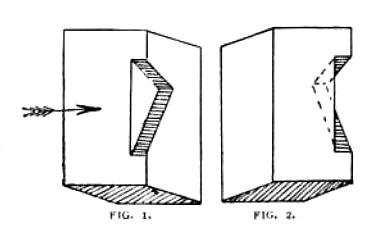
From The Strand, July 1908:
“If you ask what Fig. 1 represents, nine people out of ten will tell you that it is a triangular piece of wood fastened to a folding screen on the inside, or something to that effect. It represents in reality a solid rectangular block of wood, with a notch cut in one side. Fig. 2 shows the view looking in the direction of the arrow, the position of the notch being shown by the dotted lines.”
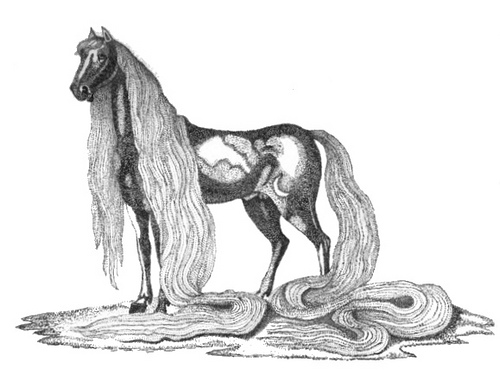
From Kirby’s Wonderful and Eccentric Museum (1820), the long-tailed stallion of Augustus II, king of Poland:
The tail and mane of this horse, exhibit an extraordinary rarity, and excite a doubt whether they may not have been the effect of some artificial means: otherwise, how happens it that the hair of no other animal of this species, should have attained such a wonderful length? The stuffed hide of this horse is preserved in the armoury at Dresden; the colour is cream pye-balled, the length of the mane is nine ells, and of the tail twelve. This horse belonged to Augustus II, king of Poland, who rode him only on extraordinary occasions, when the mane was borne by pages, and the tail by grooms; when he stood in the stable, his hair was tied up in bags.
A singular establishment exists in Russia–the imperial hotel for old worn-out horses, built in the park of Tzarkoe Selo, for the reception of animals employed in the service of the emperor. A special cemetery is annexed to the building, and tombstones record the names of the horses buried, those of the sovereigns who had ridden them, as well as the battles and memorable events at which the animals had been present.
— The Veterinarian, June 1862
When Tamara Rabi arrived at Hofstra University in 2003, strangers would smile, wave, and greet her as if they knew her. Finally a friend told her she looked just like Adriana Scott, another 20-year-old at a neighboring college. Both women had been born in Mexico, both were adopted, and both had the same birthday.
It turned out the two were identical twins who had been separated at birth in Guadalajara, adopted independently by New York families, and raised as only children 25 miles apart, Adriana in a Roman Catholic household on Long Island and Tamara with a Jewish family in Manhattan.
When they were reunited, both were studying psychology, both wore the same silver hoop earrings, and both remembered the same childhood dream. “We have the same mannerisms, the same interests, the same grades in school,” Adriana said.
Curiously, both adoptive fathers had died of cancer. What does that mean?
In 1989, a Philadelphia financial analyst visited a flea market in Adamstown, Pa., spotted an old painting whose frame he liked, and purchased it for $4.
When he removed the frame, he found a folded document between the picture canvas and the wood backing. And the document appeared to be the Declaration of Independence.
It was. He had discovered an original printing of the Declaration from its first printing in 1776. Sotheby’s auctioned it for $2.42 million in 1991, then again for $8.14 million in 2000.
“This was how Congress voted to disseminate the news of independence,” said Sotheby’s vice chairman David Redden. “So it was printed up from Thomas Jefferson’s draft of the Declaration and then sent around by couriers to the armies in the field, to the newly independent colonies, to the committees of public safety, and surely to the British, too.”
How it got into the painting is unknown.
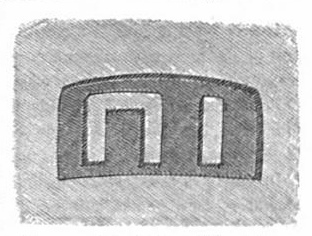
From the American Journal of Science: In November 1829, a 30-cubic-foot block of marble was raised from a quarry northwest of Philadelphia and taken to a Norristown sawmill to be cut into slabs.
“One was taken off about three feet wide and about six feet long, and in the body of the marble, exposed by the cutting, was immediately discovered an indentation, about one and a half inches long and about five eighths of an inch wide, in which were the two raised characters” (left).
“Fortunately, several of the most respectable gentlemen residing in Norristown were called upon to witness this remarkable phenomenon, without whose testimony it might have been difficult, if not impossible, to have satisfied the public, that an imposition had not been practised by cutting the indentation and carving the letters after the slab was cut off.”
No explanation is offered. The block had been raised from a depth of 60-70 feet in the quarry.
In 1744, 11-year-old Matthew Daking of Yorkshire emerged from a fever with such a ravenous appetite that “if he was not fed as he called out for it, he would gnaw the very flesh off his own bones.” When Matthew was awake, he was devouring food — though “it can hardly be said eating, because nothing passes his stomach, all is thrown up again.”
Here’s a sample of his diet, as reported in the Philosophical Transactions — an incredible 384 pounds of food in six days:
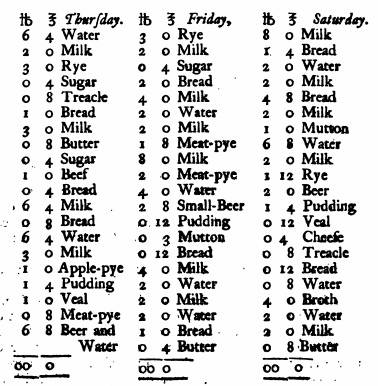

This continued for more than a year, with Matthew losing strength as his appetite grew. Eventually he lost the use of his legs. “He is sometimes so hungry, that he says he could eat them all,” reported Dr. J. Cookson. “He often wishes he were in the king’s kitchen.” He died a few months later, “quite emaciated.”
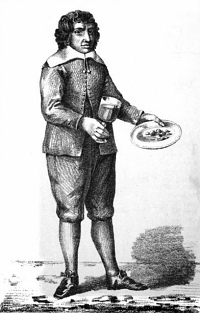
London had a curious visitor in the 17th century: Francis Battalia, an Italian said to subsist on stones. “His manner is to put three or four stones into a spoon, and so putting them into his mouth together, he swallows them all down one after another; then (first spitting) he drinks a glass of beer after them,” wrote John Bulwer in his Artificial Changeling of 1650. “He devours about half a peck of these stones every day, and when he chinks upon his stomach, or shakes his body, you may hear the stones rattle as if they were in a sack.”
A Dutch ship discovered a second stone eater on a northern island in 1757 and brought him to Avignon, where a Father Paulian declared himself “fully convinced that he is no cheat.” And in 1788 London exhibited a third such man, “the most Wonderful Phenomenon of the Age, who GRINDS and SWALLOWS STONES, &c.,” “subsisting on pebble flints, tobacco pipes, and mineral excrescences.”
What accounts for this? In Miracle Mongers and Their Methods (1920), Houdini wrote, “I watched several performances of one of these chaps who swallowed half a hatful of stones, nearly the size of hen’s eggs, and then jumped up and down to make them rattle in his stomach. I could discover no fake in the performance, and I finally gave him two and six for his secret, which was simple enough. He merely took a dose of powerful physic to clear himself of the stones, and was then ready for the next performance.” Draw your own conclusions.
In 2008, researchers at Oxford University found that subjects could reduce pain and swelling in an injured hand by viewing it through reversed binoculars.
Conversely, a magnified injury was more painful. “If it looks bigger, it looks sorer,” said physiologist G. Lorimer Moseley. “Therefore the brain acts to protect it.”